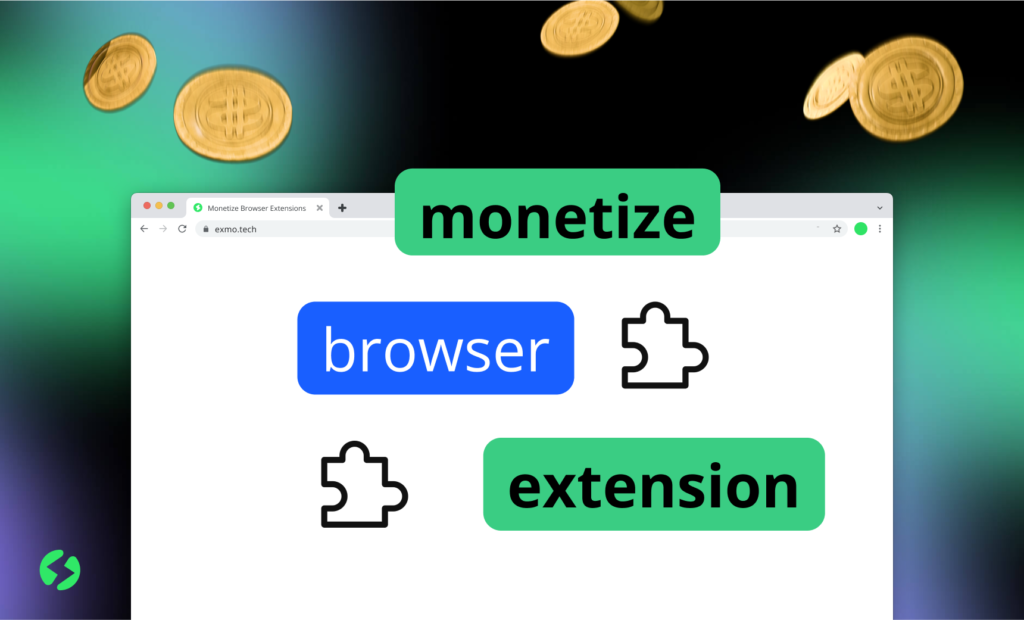From Zero to Extension Hero: Getting Started in Browser Extension Monetization

Understanding the World of Browser Extension Monetization
Browser extensions have transformed the landscape of web browsing, offering users a way to tailor their online experiences to their unique preferences and needs. These small but powerful software programs enable users to add new features and tools directly into their browsers, enhancing functionality and productivity.
The flexibility and convenience offered by browser extensions have contributed to their widespread popularity among internet users. Whether it’s blocking ads, managing passwords, or integrating with other online services, there’s a browser extension available to address almost any requirement or desire.
Monetizing browser extensions revolves around harnessing the engagement and utility provided by these tools to generate revenue through various means. Developers can explore a range of monetization channels, including advertising, affiliate marketing, premium subscriptions, and in-app purchases, to capitalize on the value they offer to users.
By understanding the unique ecosystem of browser extensions and the diverse needs of users, developers can unlock the full potential of monetization opportunities. This involves creating extensions that provide genuine value and utility, as well as implementing monetization strategies that align with user preferences and expectations.
Ultimately, successful monetization of browser extensions requires a balance between delivering valuable features and generating revenue. Developers must prioritize user experience and ensure that monetization efforts enhance rather than detract from the functionality and usability of their extensions. By doing so, they can build sustainable revenue streams while continuing to meet the evolving needs of their user base.
Exploring the Potential of Browser Extension Monetization
Monetizing browser extensions presents a wealth of opportunities for developers who are willing to invest time and effort into exploring the possibilities. With the right strategies and techniques, developers can unlock the potential of this burgeoning market and generate substantial income.

Understanding the diverse array of monetization methods is essential for developers seeking to capitalize on the popularity of browser extensions. From traditional advertising models to more innovative approaches like affiliate marketing and premium subscriptions, there’s no shortage of avenues to explore. Each method offers its own unique advantages and considerations, allowing developers to tailor their monetization approach to suit their extension’s specific goals and target audience.
Moreover, developers must adopt a strategic mindset when it comes to monetizing their browser extensions. This involves not only choosing the right monetization methods but also understanding how to effectively implement them to maximize revenue. By analyzing user behavior, market trends, and competitor strategies, developers can refine their approach and optimize their monetization efforts for optimal results.
Ultimately, success in browser extension monetization hinges on a combination of creativity, adaptability, and perseverance. By staying informed about industry trends, experimenting with different strategies, and staying attuned to user feedback, developers can position themselves for long-term success in this dynamic and rapidly evolving market. With the right approach, developers can unlock the full potential of their browser extensions and reap the rewards of their hard work and innovation.
Getting Started as a Extension Developer
Getting started as a browser extension developer involves several key steps to ensure success in the competitive landscape of extension monetization:
- Identify a Niche or Problem: Research the market to identify a specific niche or problem that your extension can address. Look for gaps in existing solutions or areas where users are expressing a need for improvement.
- Define Your Target Audience: Understand who your target audience is and what their pain points are. Develop user personas to guide your design and development process, ensuring that your extension resonates with your intended users.
- Conceptualize Unique Features: Brainstorm innovative features and functionalities that will set your extension apart from competitors. Consider how your extension can provide value to users in a way that is not currently available in the market.
- Plan Your Monetization Strategy: Research and evaluate different monetization strategies to determine which ones align best with your extension and target audience. Consider factors such as user engagement, market demand, and competitive landscape when selecting your monetization approach.
- Design a User-Centric Experience: Prioritize user experience and functionality in the design and development of your extension. Create intuitive interfaces, streamline workflows, and optimize performance to ensure a seamless and enjoyable user experience.
- Publish extension to webstore: Once your extension is fully developed and thoroughly tested, it’s time to publish it to the appropriate web store platform, such as the Chrome Web Store, Mozilla Add-ons or Opera Addons. Follow the guidelines provided by the platform to ensure compliance and maximize visibility. Provide clear and compelling descriptions, screenshots, and other promotional materials to attract users to your extension. Regularly update your extension with new features and improvements to maintain relevance and engagement with your audience.
- Test and Iterate: Conduct thorough testing and gather feedback from beta users to identify any bugs, usability issues, or areas for improvement. Iterate on your design and functionality based on user feedback to refine your extension and enhance its value proposition.
- Launch and Promote Your Extension: Once your extension is polished and ready for release, launch it on the appropriate browser extension stores (e.g., Chrome Web Store, Mozilla Add-ons). Develop a comprehensive marketing and promotion strategy to increase visibility and attract users to your extension.
- Monitor Performance and Adapt: Continuously monitor key performance metrics such as user engagement, retention rates, and revenue generated. Use this data to evaluate the effectiveness of your monetization strategy and make adjustments as needed to optimize your extension’s performance and profitability.
By following these steps and adopting a strategic approach to development and monetization, you can lay the foundation for a successful career as a browser extension developer. Focus on creating a high-quality extension that provides real value to users, and you’ll be well-positioned to thrive in the competitive world of extension monetization.
Key Considerations for Browser Extension Monetization
Before implementing any monetization strategy, it’s essential to consider the following key factors to ensure success:
- User Experience: Prioritize user experience and ensure that monetization efforts enhance rather than detract from the overall usability of your extension. Avoid intrusive ads or features that may disrupt the user experience and lead to user dissatisfaction.
- Compliance with Store Policies: If you’re publishing your extension on browser extension stores like the Chrome Web Store or Mozilla Add-ons, familiarize yourself with their policies and guidelines regarding monetization. Ensure that your monetization methods comply with store policies to avoid rejection or removal of your extension.
- Transparency and Trust: Be transparent with your users about how you monetize your extension and the benefits they receive in return. Building trust with your users is essential for maintaining long-term relationships and fostering loyalty.
- Diversification: Consider diversifying your monetization strategies to minimize risk and maximize revenue potential. By exploring multiple revenue streams, you can mitigate reliance on any single source of income and adapt to changing market conditions.
- Continuous Optimization: Continuously monitor and optimize your monetization efforts based on user feedback, market trends, and performance metrics. Experiment with different strategies, analyze results, and refine your approach to maximize revenue and user satisfaction.

Implementing Browser Extension Monetization Strategies
Implementing monetization strategies is a crucial step in maximizing the revenue potential of your browser extension. After developing a solid extension that provides genuine value to users, it’s time to explore various avenues for generating income while maintaining a positive user experience.
Ready-to-go Solution
Fortunately, there is the Exmo extension monetization service that gives you access to a wide range of partners. You don’t need to search for ways to monetize your extension yourself or connect with advertisers. Exmo has already taken care of all this. Keep in mind that finding suitable advertisers usually requires significant time and effort, not to mention negotiating rates. So before adding monetization features to your extension on your own, think about how effective it is and how much time you will spend on it.
Leveraging Ads for Revenue Generation
Displaying ads within your extension is a common method of monetization. By partnering with advertisers, you can earn revenue through views or clicks on these ads. From interstitial ads to banners, there are various formats you can explore to maximize your earnings.
When it comes to earning revenue from extensions, advertising is one of the most effective methods for the majority of owners. You can offer ad space within the extension or vary ads to increase income and attract new customers.
Depending on your product’s nature, media advertising can include various formats: interactive, pop-ups, videos, and full-screen short clips, known as interstitial advertising.
Consider integrating ads into your extension to generate revenue through views or clicks. However, be mindful of ad placement and frequency to avoid disrupting the user experience. Choose appropriate and unobtrusive ad formats that align with your extension’s goals and audience.
It’s also important to remember and adhere to the rules of the store where your extension will be published. Each platform has its own rules and recommendations regarding ad placement, which should be carefully studied and followed. Violating these rules may result in your extension being rejected or even your developer account being blocked. Therefore, it’s crucial to ensure that your ads comply with all store requirements and do not contradict their content policy.
Affiliate Marketing
Partnering with relevant affiliate programs allows you to promote products or services that complement the functionality of your extension. By incorporating affiliate links or promotional content into your extension, you can earn commissions for each customer attracted or sale made through your platform. Ensure that the products or services you advertise are genuinely useful to your users to maintain trust and authority.
However, it is important to remember that developing such functionality carries certain risks. Improper or intrusive use of affiliate advertising can lead to negative user perception of your extension and even reduce its popularity.
Additionally, it is necessary to carefully select affiliate programs and products to ensure they align with the interests and needs of your audience. Violating the rules of affiliate programs or engaging in unethical partnerships can also pose a risk of reputation loss and even legal consequences. Therefore, it is important to apply this monetization method with caution and responsibility, adhering to all necessary standards and rule.
The Freemium Model: Offering Paid Features
Another approach to monetization is the freemium model, where users can access a basic version of your extension for free but can opt to pay for premium features. This model allows you to cater to a wide user base while offering additional value to users willing to pay for enhanced functionality.
Premium Features and Subscription Model
Offer additional features or content as part of a premium subscription package to users willing to pay for enhanced functionality. This can include advanced tools, exclusive content, or priority support services. Implementing a subscription model allows you to establish a recurring revenue stream while providing users with incentives to upgrade and access premium features.
Merchandise Sales
Explore the possibility of selling branded merchandise related to your extension, such as apparel, accessories, or digital products. This can serve as an additional revenue stream while also promoting brand awareness and fostering a sense of community among your user base. Consider integrating e-commerce functionality directly within your extension to streamline the purchasing process and encourage sales.
Sponsorship and Partnerships
Collaborate with brands or companies that align with your extension’s target audience and values. Offer sponsorship opportunities or integrate sponsored content within your extension in exchange for financial support or other benefits. Partnering with relevant brands can provide additional revenue streams and opportunities for cross-promotion while enhancing the overall value proposition of your extension.
When implementing monetization strategies, it’s essential to strike a balance between generating revenue and preserving the user experience. Prioritize transparency, relevance, and user engagement to ensure that your monetization efforts enhance rather than detract from the overall value of your extension. By diversifying your revenue streams and continuously refining your approach based on user feedback and market trends, you can optimize the monetization potential of your browser extension while maintaining user satisfaction and loyalty.
Donation-Based Monetization
Asking for Support Asking for donations from users who appreciate your extension’s value is another viable monetization strategy. While not guaranteed, some users may be willing to contribute financially to support the ongoing development and maintenance of your extension.
Maximizing Your Earnings Potential
As you progress in refining and enhancing your browser extension, it becomes imperative to actively monitor and analyze your monetization strategies. This involves tracking various metrics, including user engagement, conversion rates, and revenue generated, to gain insights into the effectiveness of your monetization efforts.
Tracking User Engagement
Keep a close eye on user engagement metrics such as active users, session duration, and frequency of usage. Understanding how users interact with your extension provides valuable insights into its popularity and effectiveness.
Analyzing Conversion Rates
Conversion rates measure the percentage of users who take a desired action, such as clicking on an ad or making a purchase. By analyzing conversion rates, you can assess the effectiveness of your monetization methods and identify areas for improvement.
Monitoring Revenue Generated
Track the revenue generated through your monetization efforts to evaluate the financial performance of your extension. This includes revenue from ads, affiliate commissions, subscription fees, or any other monetization channels you have implemented.
Experimenting with Different Strategies
Continuously experiment with different monetization strategies to determine which ones yield the best results for your extension. This may involve testing different ad formats, adjusting pricing models, or exploring new revenue streams.
Testing New Features
Introduce new features and functionalities to your extension based on user feedback and market trends. By adding value to your extension, you can increase user engagement and potentially attract more advertisers or subscribers.
Listening to User Feedback
Pay close attention to user feedback and incorporate it into your development process. User feedback provides valuable insights into user preferences, pain points, and suggestions for improvement, which can inform your monetization strategies and overall development roadmap.
By diligently monitoring metrics, experimenting with different strategies, and listening to user feedback, you can optimize your browser extension for maximum earnings potential. Continuously refining and improving your extension ensures its competitiveness in the market and its ability to generate sustainable revenue over the long term.
FAQ
What is Exmo and how does it help with browser extension monetization?
Exmo is a platform for monetizing browser extensions through affiliate marketing. It provides extension developers with access to a wide range of partners, eliminating the need to search for monetization opportunities or connect with advertisers independently. By joining the Exmo monetization platform, developers can easily integrate affiliate marketing into their extensions and diversify their income sources.
Can I monetize my browser extension using Exmo for free?
Yes, you can monetize your browser extension using Exmo for free. There are no upfront costs or fees associated with joining the Exmo monetization platform. Developers can leverage Exmo’s affiliate marketing tools and resources to generate revenue from their extensions without incurring any expenses. However, keep in mind that Exmo may take a commission or fee for successful affiliate referrals, depending on the terms of the partnership agreement.
Is it possible to monetize a Chrome or Firefox extension?
Yes, both Chrome and Firefox extensions can be monetized using various strategies such as ready-to-go solution, displaying ads, offering premium features, implementing affiliate marketing, soliciting donations, or selling merchandise.
Can I monetize my browser extension without displaying ads?
Yes, you can monetize your browser extension without displaying ads by exploring alternative monetization methods such as offering premium features for a fee, implementing affiliate marketing, soliciting donations from users, or selling merchandise related to your extension.
Conclusion
Monetizing your browser extension can indeed be a rewarding journey that requires a blend of creativity, technical expertise, and business acumen. By prioritizing the creation of a valuable extension that addresses user needs, implementing effective monetization strategies, and consistently refining your product, you can transition from a novice to an extension hero within the competitive landscape of browser extension monetization.
Furthermore, platforms like Exmo offer additional opportunities for extension developers to maximize their revenue potential. Through Exmo’s monetization platform, developers can easily integrate affiliate marketing into their extensions, thereby diversifying their income streams and reaching a broader audience.
So, whether you’re just starting or already on your way, remember to leverage the tools and resources available, such as Exmo, to unlock the full potential of your browser extension development skills. Embark on your journey today and seize the countless opportunities awaiting in the world of browser extension monetization.
How can we help you monetize your browser extension?
As an extension developer, you can generate revenue for your business and diversify income sources with Exmo. Exmo is a platform for monetizing extensions through affiliate marketing. Monetize your extension in just a few clicks by joining the Exmo monetization platform.


